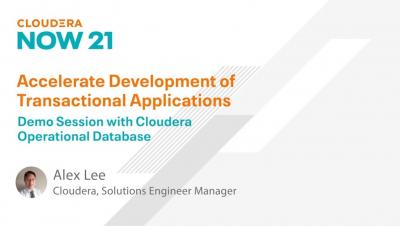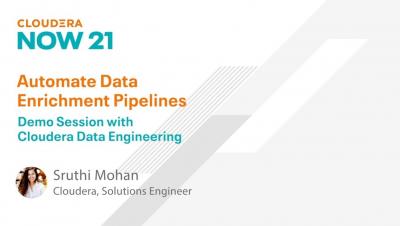Systems | Development | Analytics | API | Testing
Cloudera
Cloudera Data Platform extends Hybrid Cloud vision support by supporting Google Cloud
CDP Public Cloud is now available on Google Cloud. The addition of support for Google Cloud enables Cloudera to deliver on its promise to offer its enterprise data platform at a global scale. CDP Public Cloud is already available on Amazon Web Services and Microsoft Azure. With the addition of Google Cloud, we deliver on our vision of providing a hybrid and multi-cloud architecture to support our customer’s analytics needs regardless of deployment platform.
Accelerated integration of Eventador with Cloudera - SQL Stream Builder
In October 2020, Cloudera made a strategic acquisition of a company called Eventador. This was primarily to augment our streaming capabilities within Cloudera DataFlow. Eventador was adept at simplifying the process of building streaming applications. Their flagship product, SQL Stream Builder, made access to real-time data streams easily possible with just SQL (Structured Query Language).
Will Data Privacy drive an Enterprise Data Strategy?
Data privacy is an increasingly complex and contentious topic. The appropriate use of data and transparency to the potential uses of the data are at the center of debate amongst the largest Big Tech companies. The protection and controls around data become increasingly complex when used in the context of banking and insurance activities. Personal and confidential information carries heightened sensitivity in the light of financial, health and insurance activities.
Exploring Data & Dashboard Creation on CDP Public Cloud
Filter more pay less with the latest Cloudera Data Warehouse runtime!
One of the most effective ways to improve performance and minimize cost in database systems today is by avoiding unnecessary work, such as data reads from the storage layer (e.g., disks, remote storage), transfers over the network, or even data materialization during query execution. Since its early days, Apache Hive improves distributed query execution by pushing down column filter predicates to storage handlers like HBase or columnar data format readers such as Apache ORC.
CDP Endpoint Gateway provides Secure Access to CDP Public Cloud Services running in private networks
Cloudera Data Platform (CDP) Public Cloud allows users to deploy analytic workloads into their cloud accounts. These workloads cover the entire data lifecycle and are managed from a central multi-cloud Cloudera Control Plane. CDP provides the flexibility to deploy these resources into public or private subnets. Nearly unanimously, we’ve seen customers deploy their workloads to private subnets.
FRTB: Will 2023 Finally be the Year?
The Fundamental Review of the Trading Book (FRTB), introduced by the Basel Committee on Banking Supervision (BCBS), will transform how banks measure risk. FRTB is designed to address some fundamental weaknesses that did not get addressed in the post-2008 financial crisis regulatory reforms. In order to help make banks more resilient to drastic market changes, it will impose capital requirements that are more closely aligned with the market’s actual risk factors.






